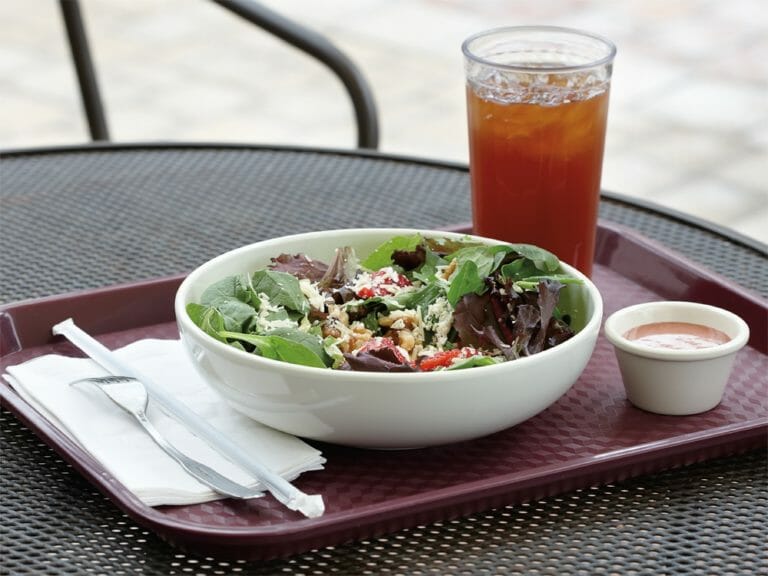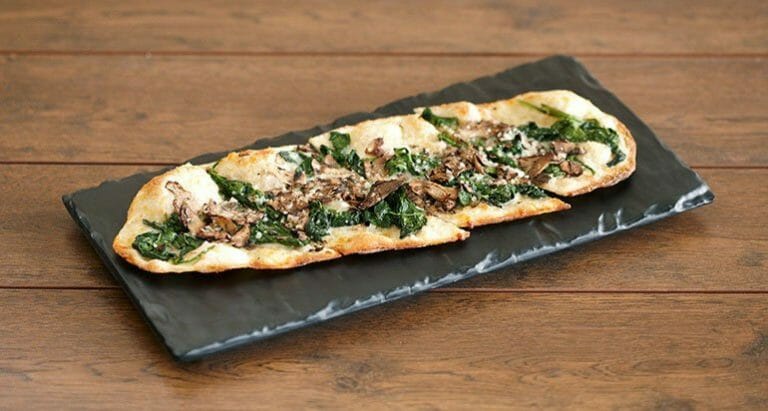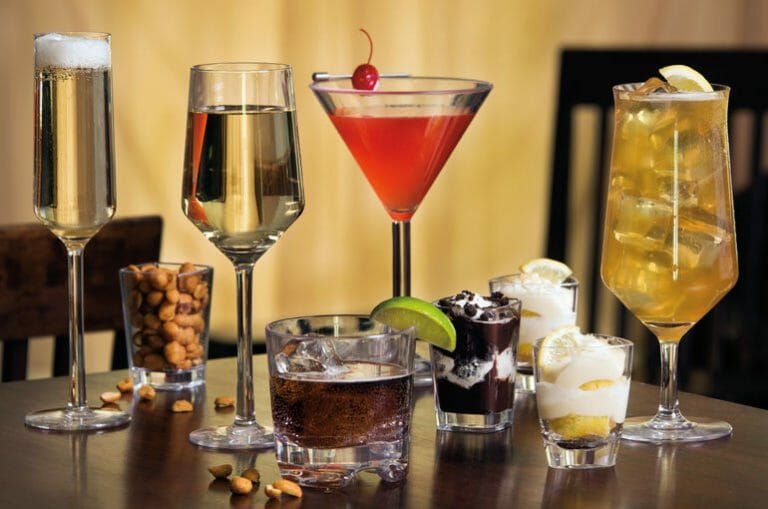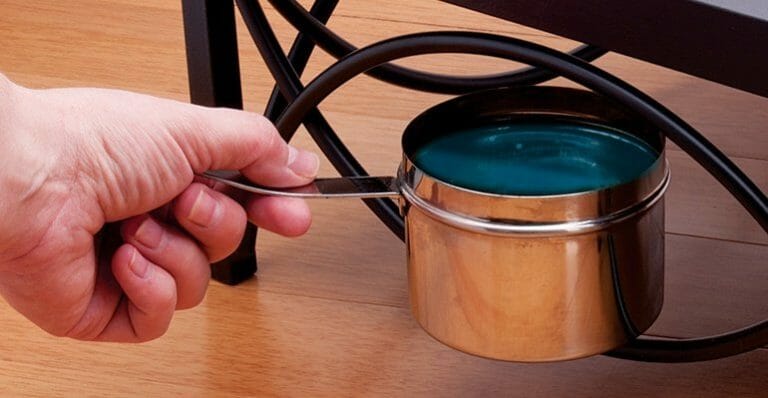Best Action Station Setups, Heat Sources, and Cooktops for Catering
Action stations, also referred to as display cooking, are popular options in high-volume foodservice for a number of reasons. Guests are drawn to the interactive experience as they watch chefs prepare their meals in real time, often leading to higher check averages because of a perceived elevated service level. Sounds of sizzling food and fresh-cooked aromas activate more senses than a closed kitchen can provide, creating a stimulating experience for diners.
From a logistics standpoint, you have several options for action station setups, heat sources, and cooktops. Let’s take a look at some of the preferred action station choices out there to help you understand which applications may be a fit for your operation.
 Pictured: Single Burner Action Station and Double Burner Action Station
Pictured: Single Burner Action Station and Double Burner Action Station
Action Station Setups & Cooktops
Plenty of choices are available on today’s market to help you achieve the right look for your action station service. A typical action station setup includes a shell, which frames your heat source and cooktop. The look of your shell can be used to position your action station for different levels and styles of service.
You’ll use cooktops to either warm food that was cooked offsite, or cook it from start to finish in front of your guests. Finally, you’ll need a heat source to be able to cook or warm your food.
Popular action station shells:
- Enclosed with side, front, and/or bottom venting for heat release, great for cooking with open flame via chafing fuel and butane stoves, and acts as a barrier to wind
- Cooktop stands with completely open bases, great for use with chafing fuel
- Adjustable legs for cooking/warming on uneven surfaces
- Stainless steel with brushed, mirrored, and dimpled finishes
- Often available in single- or double-burner setups
From high-end wedding catering to a family reunion BBQ, you can achieve a wide range of looks depending on which shell option you go for. You may want to have a few different styles on-hand to easily accommodate the varied service environments caterers often encounter.
Commonly used cooktops:
- Double-sided cast iron with a flat and a ribbed side, great for cooking or warming
- Aluminum or stainless steel flattop, great for warming
- Grill/grate, best used for direct cooking with pots and pans
Some of the most commonly used heat sources:
- Chafing fuel
- Induction heat
- Butane gas
Each of these heat sources offer nuanced differences that will affect your action station cooking or warming in different ways. Let’s dig into them a little more.
{{cta(‘4bea3bbb-be5d-4bba-a647-21fb269049bc’)}}
Heat Sources for Foodservice Action Stations
Heat sources are an obvious need for any foodservice operation serving hot dishes. It’s not only necessary for cooking, it’s required for keeping food within the temperature safety zone. The heat sources mentioned above yield different cooking/warming capabilities:
- Chafing fuel â provides direct and indirect heat
- Induction heat â provides direct heat but requires proper induction cookware
- Butane gas â provides direct heat
You can use direct heat to cook items from start to finish. Indirect heat can be used to reheat food that was prepared offsite or to keep freshly cooked food warm. Direct heat can be used for âlow and slowâ cooking, but action stations are rarely used for items with long cook times.
Chafing Fuels at Foodservice Action Stations
Chafing fuel uses gel or liquid to produce a small flame, making it an adaptable heat source commonly used at action stations because of its small size and versatility. You can find canisters with different burn times. Two-, four-, and six-hour burn times are the main options on the market.
Different heat intensities are available depending on your needs. You can use chafing fuel with a wick (which employs the liquid form of fuel instead of the gel) for more concentrated hot areas on your portable cooktop. Encasing your chafing fuel in a canister with an adjustable lid allows you to increase or decrease heat, or snuff out a flame altogether. If environmentally friendly service is important to your operation, you can easily find biodegradable chafing fuels made from renewable resources on the market.
If you have a flattop portable cooking station, you can strategically place chafing canisters to create hot and warm spots on your cooking surface. For example, if your action station is set up for a breakfast bar, you can use the hot end of your flattop to cook eggs or pancakes and the less hot end to warm sauted veggies or potatoes that were prepared offsite. Essentially, two functioning areas can be created with one or two chafing fuel canisters while only using a single cooktop at your action station.

You can do the same using a grill implement at lunch or dinner action stations. Use the hot side to create grill marks on par cooked chicken, burgers, hot dogs, etc., and move your protein to the warm side to keep them service-ready.
Because chafing fuel creates a fire-based heat source, it can’t be used where open flames aren’t permitted. If you’re catering an outdoor event in an area with a burn ban, you’re out of luck, so let’s take a look at portable, flameless induction cooktops.
Induction Heat at Foodservice Action Stations
Induction cooking, easily found in portable sizes with single and double burners, has some really neat attributes that have undoubtedly contributed to its growing popularity. Unlike gas or electric cooktops, induction uses an electromagnetic coil beneath a surface of ceramic or glass. To activate the heating element, it has to come into contact with induction-ready cookware. That’s the only way to generate heat on an induction range, which is a unique quality.
The end result is that the heat comes from the cookware itself instead of the cooktop. Heat is generated quickly, sometimes boiling a pot of water in about 60 seconds. When the cookware is no longer in contact with the induction surface, the cooktop cools off quickly because the heat source is gone.
Cookware that contains iron is compatible with induction cooking. Aluminum cookware does not contain iron, so technically it won’t work on an induction cooktop. However, due to the growing popularity of induction cooking and aluminum’s light weight and versatility, manufacturers are filling the gap with aluminum cookware equipped with induction-ready bases.
Action station service would benefit greatly from induction-ready aluminum cookware because it’s one of the least heavy metals out there, which makes it easy to schlep around. If you’re not sure whether you have induction-ready cookware, just hold a magnet to it. If the magnet sticks, you’re in business.
In an action station environment, an electrical outlet is all you’ll need to power a portable induction cooktop, which can create some limitations to where you’re able to set up shop. As long as you’re aware of this and plan ahead, you should be fine.
These are great attributes in an action station setting because:
- You don’t need much for your setup â just an electrical outlet and proper cookware
- Induction cooking is flameless, which means you can use it almost anywhere
- It heats and cools rapidly, aiding in fast-paced service
- The rapid cooling feature reduces the chance of staff and guests burning themselves
- Plenty of induction cookware is on the market, so you can
- Sear
- Blacken
- Saut
- Pan fry
- Reheat and serve a stew or roast prepared offsite
One lookout for this is kind of heat source as an action station is the weight of your cookware. Cast iron cookware is induction-ready, but it’s heavy. If you’re going to use cast iron on induction, check to see how much weight the glass or ceramic surface can hold. If your pot or pan is too heavy, you may crack the surface, which we can agree is a less than ideal situation in high-volume service, especially if you’re offsite.
Butane Gas at Foodservice Action Stations
Similar to induction cooktops, butane stoves are commonly found in portable sizes with single and double burner options. Unlike an induction cooktop, butane is a gas-powered heat source with an open flame. And you don’t need electricity to power it â so long as you have a butane cartridge or fuel can, you’re good to go.
Butane shares some similarities with chafing fuel, but functions quite differently. Even though chafing fuel is a flame-based heat source, the flame is smaller and farther away from the surface it’s heating than butane typically is. Butane cooktops function similarly to cooking on a gas stove. You can use it with pots and pans for direct heat, which is something chafing fuel doesn’t do well.
Griddle and grill tops can also be placed over portable butane stoves instead of a regular stovetop. And if you have dual burners, you can keep one side hot (hotter than chafing fuel allows) and the other warm.
Butane heat sources at action stations are versatile â can you do almost anything on them that you could in your normal kitchen. However, if you’re serving outdoors in a cold and/or windy environment, you may want to have backup fuel canisters on-hand because those weather conditions can cause you to burn through more fuel faster than you otherwise would. An enclosed shell can also help to protect against the elements.
Because butane is a flame-based direct heat source, it heats quickly â not as fast as induction burners, but not as slowly as chafing fuel. The same goes for cooling off. This makes it a good choice for action stations, but know that it’ll take just a bit longer to cool off enough to pack up at the end of service than an induction heat source.

In summary, all of these heat sources offer value in an action station setting in their own way, and are fairly versatile when it comes to the types of cookware with which they’re compatible. Generally speaking, each heat source can be used with griddle and grill tops except for chafing fuel. And induction cooktops work with any induction-ready pot or pan, but aren’t great for griddle and grill tops.
Now that you know about the best options for action stations, heat sources, and cooktops, get out there and put on a great show for your guests! If your action station service includes the use of metal baskets, you may benefit from reading “Which Kind of Metal Basket Coating is Best for Your Foodservice Operation?”








